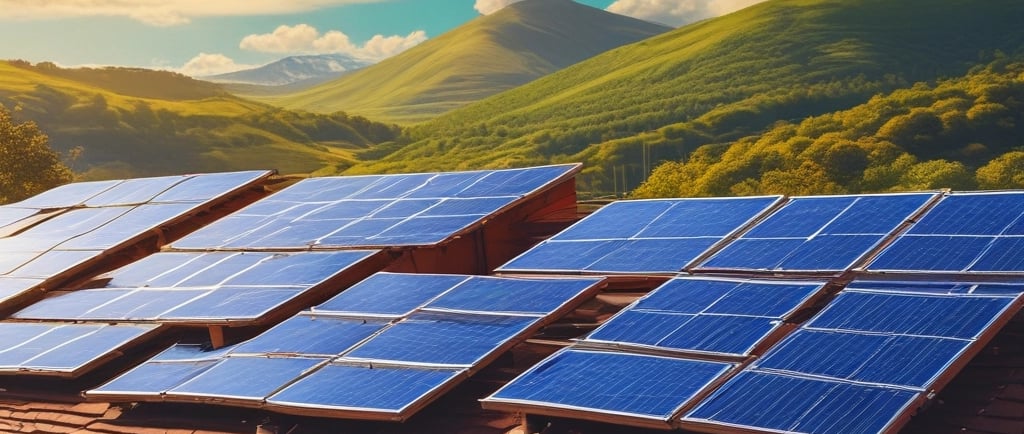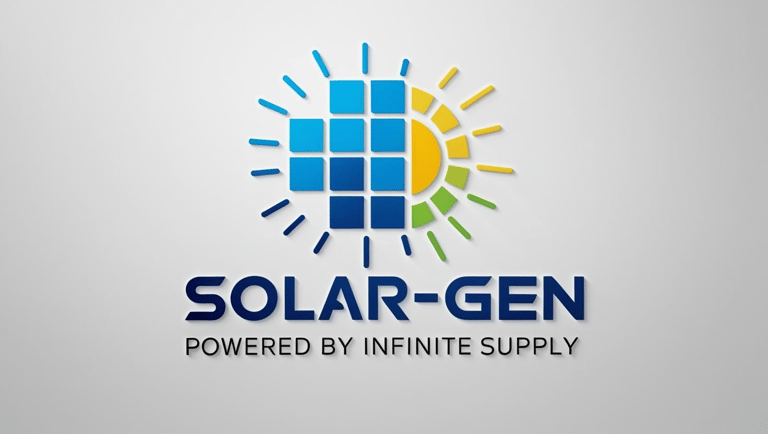Complete Guide to Roof Solar Panel Installation
https://claude.site/artifacts/c229572e-df7f-419c-8e84-d3fb4a615a00
3/6/20254 min read


Complete Guide to Roof Solar Panel Installation
Table of Contents
Introduction
Installing solar panels on your roof is a significant investment that can provide clean energy and financial benefits for decades. This comprehensive guide walks you through every step of the process, from initial assessment to final connection and beyond. While many homeowners choose to work with professional installers, understanding the complete process helps you make informed decisions and ensure quality work.
Roof Assessment
Roof Condition Evaluation
Age and integrity: Your roof should have at least 10-15 years of life remaining before installing solar panels. Replacing a roof after panel installation is costly and complicated.
Structural capacity: Most residential roofs can support solar panels (which add approximately 3-4 pounds per square foot), but older homes may require a structural engineering assessment.
Roofing material compatibility: Different roofing materials require different mounting systems:
Asphalt shingles: Most common and easiest for installation
Metal: Requires specialized clamps for standing seam or penetrations for corrugated
Tile: Requires tile hooks or replacement of tiles with mounting points
Flat roofs: Typically use ballasted (weighted) mounting systems
Solar Potential Analysis
Orientation: South-facing roof sections (in Northern Hemisphere) typically capture maximum sunlight, though southeast and southwest orientations can still be viable.
Pitch/slope: The optimal angle is generally equal to your latitude, but panels perform adequately across a wide range of angles.
Shading analysis: Conduct a detailed shade study accounting for:
Trees and vegetation
Neighboring buildings
Roof elements (chimneys, vents, dormers)
Seasonal sun path variations
Available Space Evaluation
Usable area: Measure clear, unobstructed roof sections, leaving adequate space around vents, chimneys, and edges.
Setbacks: Most building codes require:
3-foot setbacks from roof edges
18 inches from ridge lines
Clear paths around roof penetrations
System Design
System Sizing
Energy consumption analysis: Review at least 12 months of electricity bills to understand your usage patterns.
Production goals: Decide whether you want to:
Offset 100% of electricity usage
Size for optimal financial return
Maximize system size based on available roof space
System capacity calculation: A typical formula is:
Annual kWh needed ÷ local production factor (kWh/kW) = system size in kW
Component Layout
Panel arrangement: Optimize for:
Maximum panel count in available space
Aesthetic considerations (symmetrical layouts, hidden wiring)
Minimizing wire runs
Inverter location: For string inverters, identify a cool, accessible location near your electrical panel.
Conduit routing: Plan the least visually intrusive path for electrical conduit.
Production Modeling
Annual production estimate: Use solar mapping tools to calculate:
Monthly production variation
Annual total output
Performance ratio accounting for system losses
Permitting and Paperwork
Building Permits
Local building department requirements: Typically includes:
Structural review
Electrical plans
Site plans
Equipment specifications
Utility Interconnection Application
Net metering agreement: Document that allows bidirectional electricity flow
Interconnection standards: Requirements for grid connection based on system size
Metering requirements: Possible meter replacement for bidirectional capability
Incentive Applications
Federal tax credit documentation
State/provincial rebate applications
Local incentive programs
Solar renewable energy certificate (SREC) registration where applicable
Equipment Selection
Solar Panels
Panel technology options:
Monocrystalline: Highest efficiency (18-22%), premium price
Polycrystalline: Moderate efficiency (15-17%), more affordable
Thin-film: Lowest efficiency but flexible and lightweight
Bifacial: Capture light from both sides, ideal for specific installations
Key specifications:
Wattage rating (typically 360-400W for residential panels)
Efficiency percentage
Temperature coefficient
Physical dimensions and weight
Warranty terms (product and performance)
Inverters
Inverter types:
String inverters: Most economical, but entire strings affected by partial shading
Microinverters: One per panel, maximizes production, easier to monitor
Power optimizers: Combined approach with optimizer at each panel feeding to a string inverter
Selection criteria:
Efficiency rating
Warranty period
Monitoring capabilities
Expansion potential
Rapid shutdown compliance
Mounting System
Mounting options:
Penetrating mounts with flashing (most common for pitched roofs)
Rail-less systems
Ballasted systems for flat roofs
Specialized systems for specific roof materials
Material considerations:
Aluminum rails for corrosion resistance
Stainless steel hardware
Compatible flashing for roof type
Balance of System Components
Electrical equipment:
Disconnects
Combiner boxes
Rapid shutdown equipment
Monitoring hardware
Wiring and conduit:
PV-rated wire
Weather-resistant conduit
Appropriate gauge based on current
Pre-Installation Preparation
Site Preparation
Roof cleaning and repair
Attic access verification
Clearing work areas
Establishing safety perimeters
Materials Logistics
Delivery scheduling
Storage requirements:
Dry, secure location for electronics
Flat surface for panel storage
Accessibility for heavy components
Equipment staging
Safety Planning
Fall protection setup:
Harness anchor points
Roof brackets and scaffolding
Safety railings
Electrical safety measures:
Lock-out/tag-out procedures
Testing equipment
Personal protective equipment (PPE)
Installation Process
Mounting System Installation
Marking rafter/truss locations:
Use stud finder or attic measurements
Mark exact locations on roof
Installing roof attachments:
Drill pilot holes into rafters
Install flashed mounting points
Seal all penetrations
Securing rails or mounting hardware:
Attach rails to mounting points
Ensure proper alignment and spacing
Level rails across roof plane
Panel Placement
Lifting panels to roof:
Use proper lifting equipment (ladder lifts or manual lifting)
Handle panels by frame only
Avoid twisting or flexing panels
Securing panels to mounting structure:
Attach using manufacturer-specified hardware
Maintain proper spacing between panels
Ensure alignment for aesthetic appearance
Microinverter/Optimizer Installation (if applicable)
Attaching devices to rails or panels
Connecting to panel junction boxes
Preliminary wiring between devices
Electrical Connections
DC Wiring (Panel to Inverter)
String wiring configuration:
Connect panels in series to reach target voltage
Use manufacturer wiring diagrams
Maintain polarity consistency
Wire management:
Secure wires to rails or panel frames
Prevent exposure to roof surface
Ensure drip loops at connections
Grounding system:
Install equipment grounding conductor
Connect to panel frames and racking
Bond to house grounding system
AC Wiring (Inverter to Electrical Panel)
Conduit installation:
Route from inverter to main panel
Use appropriate weatherproof fittings
Support at required intervals
Circuit installation:
Install appropriately sized breaker
Connect to dedicated solar input (if applicable)
Label all solar circuits clearly
Monitoring System Setup
Communication connections:
Establish internet connectivity
Test data transmission
Sensor installation (if applicable):
Irradiance sensors
Temperature probes
Inspection and Grid Connection
Preliminary Testing
Continuity testing of all circuits
Insulation resistance measurements
Voltage verification of DC strings
Polarity confirmation
Official Inspections
Building department inspection:
Structural attachment verification
Code compliance check
Electrical inspection:
Wiring methods
Disconnecting means
Labeling and marking
Utility inspection (often combined with or following electrical inspection)
Grid Connection Process
Utility meter exchange (if required)
Permission to operate (PTO):
Final authorization from utility
Documentation of approval
System commissioning:
Inverter startup procedure
Production verification
Performance testing
System Monitoring and Maintenance
Monitoring Setup
Account creation and configuration
Setting performance baselines
Alert configuration:
Production thresholds
Error notifications
Comparison to expected output
Regular Maintenance Schedule
Panel cleaning:
Frequency based on local conditions
Proper cleaning methods
Safety considerations
Visual inspections:
Check for physical damage
Verify mounting security
Inspect wiring and connections
Performance review:
Regular production analysis
Comparison to projections
Degradation measurement
Troubleshooting Common Issues
Production Problems
Reduced output solutions:
Clean panels
Check for new shading sources
Verify inverter operation
String or panel failure diagnosis:
Voltage testing
Thermal imaging
IV curve tracing
Inverter Issues
Error code interpretation
Communication problems:
Network connectivity
Software updates
Warranty claim process
Roof and Mounting Concerns
Leak detection and remediation
Mount tightening procedure
Weather damage assessment
Resources and References
Professional Support
Installer support contacts
Equipment manufacturer resources
Online forums and communities
Documentation Storage
System specifications
Warranty documents
Permitting and interconnection agreements
Monitoring credentials
Emergency Procedures
System shutdown instructions
Emergency contact information
Safety protocols
This guide provides a framework for understanding the complete rooftop solar installation process. While many homeowners will rely on professional installers for most steps, being informed about each aspect ensures you can evaluate work quality, ask appropriate questions, and maintain your system properly for decades of clean energy production.
